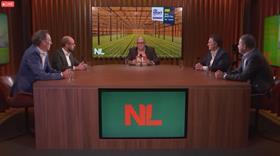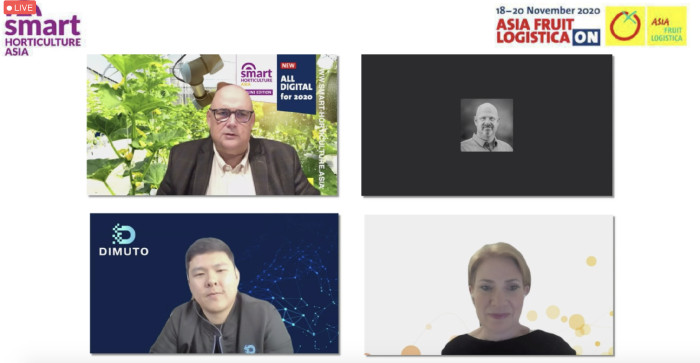
As Smart Horticulture Asia progressed through its final day programme it became increasingly clear that there is significant value locked behind a digital door for the fresh produce industry.
The theme of technology driven supply chains collated insights from a number of speakers about how data and technology could be more effectively used to connect with consumers, increase transparency and reduce post-harvest loss.
Joseph Mark Buhl, director of business development and co-founder of Purechex, talked about how the right data, presented the right way can change the consumer-producer relationship.
Buhl said producers can often be removed from consumers and even when they do connect, the data from the supply chain presented to the consumers is not what the consumers want to see.
Consumers want to be told about where their produce comes from, what makes it healthier or tastier and see the certificates that authenticate excellence such as organic or Fairtrade, according to Buhl. However, it’s not enough to just give access to this data.
“Consumers like to ingest data nowadays in a more interesting manner,” said Buhl “So whatever system comes to the forefront in the future will need to be able to carry a number of different layers of data that will allow products to effectively carry a direct message to the consumer,”
“Something like a visual message on augmented reality is something very interesting and entertaining to the consumer.”
Buhl said providing this information, even for commoditised fruit and vegetables, will be more crucial in the future, as consumers will use it to determine authenticity and producers have an opportunity to do this directly.
“As we move into that last mile economy, regardless of channel to market or who brings the food to the doorstep, there's an opportunity to have a conversation directly with a consumer,” said Buhl.
“I think that now is the time for the producers to take that opportunity to assert that position and power themselves to become the two most important stakeholders in the supply chain - the consumer and the producer.”
Adrian Teo, chief operating officer of DiMuto, followed Buhl and discussed some of the other ways value can be created by effectively digitising the supply chain.
“The truth is that the global trade is highly fragmented and disconnected digitally speaking and as a result, a lot of value has been locked away,” said Teo.
“There are tremendous implications of this, you see a tremendous amount of global food waste just because we cannot see the data of the food lost,”
“Closer to our hearts, commercially speaking, there are problems with trade disputes, financial access and then also the consumer standpoint, the inability for them to continue to engage with the product and see where the food really originated.”
DiMuto’s answer has been to create digital identities for products, down to the unit level, in the form of a QR code and digitise their journey through the supply chain.
Yvonne Tweddle, managing director of Jupiter Group, also shared the importance of transparency to her company. In particular, Jupiter Group has made a concerted effort to ensure all of its growers and employees across the world are involved in building a transparent supply chain.

Preventing post-harvest loss
The spotlight then turned to the Netherlands as a round-table discussed to the various ways the country’s fresh produce industry is dealing with post-harvest loss.
Toine Timmermans, director of Together Against Food Waste, detailed the organisation’s efforts to address waste in the country.
“Globally about one third of all the food that we produce is lost or wasted somewhere in the supply chain and in Europe, it's about 20-25 per cent,” said Timmermans.
“On a national scale companies and governments have worked and set up a national programme called Food Waste Free United and one of the objectives is to halve food waste across the whole food chain by 2030.”
Timmermans said the use of data would play an essential role in achieving this goal.
“It is very much about sharing data, because if we produce what we know is needed, and we are able to share all that information and use sensors to optimise the quality etc. That means we can better preserve the food and we don't have to waste it,” he explained.
Also contributing to the discussion was Wageningen University’s Eelke Westra who gave an insight into some of the research being conducted into post-harvest waste.
VictorMonster, managing director of Liquidseal, provided an example of how innovation could deliver significant progress in reducing waste with the company’s chemical-free post-harvest coating.
Finally, Kees Rijnhout, chief executive of Jaguar, explained his company’s efforts to find safer ways to transport its food and reduce waste with a number of strategies including the use of social innovation.
This session of Smart Horticulture Aisa is available on demand to all registered Asia Fruit Logistica ON visitors and exhibitors.Simply click the content tab on the Asia Fruit Logistica ON platform.
Asia Fruit Logistica ON takes place online on 18-20 November.



